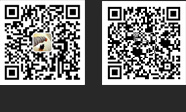

News
Your Current Location:Orient Printing Equipment CO.,LTD >> News >> 浏览文章Everyone knows that printing was first invented in China and used in Japan and Korea. No doubt European travelers and businessmen from the 14th century to the Far East saw or heard of printed books. But there is no evidence that printing in Europe was learned from Asia. Western Europe seems to have invented printing independently. Here we are talking about the invention of European printing. From the earliest to less than 500 years ago, in Europe, every book was painstakingly handwritten. Although the copyists have amazing skills and speed in copying books, each considerable book takes a lot of time and labor, so the price is very expensive. Only rich people or wealthy institutions can have a large collection of books.
European printing was invented during the Renaissance of the 15th century A.D., a period of transition from the Middle World to modern times. Now printing is an extremely complex process, every step of perfection has gone through centuries; but the most important part is the movable typeface that can be repeatedly used to print text. Another important factor is a paper that is easy to print, easy to handle, durable and inexpensive. The ancient Greeks and Romans wrote with papyrus, a tough reed fibre grown in the Nile Valley; but papyrus was valuable and not suitable for printing. Parchment (animal skins, especially sheepskin) is the standard material for Medieval handwritten documents and is durable. But parchment, like papyrus, is expensive and bulky, and is not suitable for printing. Paper is the most suitable material, but paper appeared quite late in Europe.
The idea of movable fonts evolved from ancient practice. The old way is to engrave the whole word or sentence on the wooden plate, and then apply the ink on the suitable plane to leave a clear impression. In the Middle Ages, kings and princes often engraved their signatures on wooden or metal plates to facilitate the use of signatures, seals or licences. As early as the 12th century, similar engravings were used to reproduce pictures and handwriting from woodblock stamping to lettering on many equal-height small blocks of wood or metal and then arranging them in the required order for printing, which was a natural but slow-moving step. Movable typefaces are better than the largest ones in integrated wood plates. As long as the typefaces are rearranged, unlimited printing can be accomplished.
About us
About us Enterprise cultureProduct center
Muller Martini Parts Folding Machine Parts Heidelberg Press Parts Man Roland Press Parts Komori Press Parts Others KBA press parts Mitsubishi Printer Parts CTP Machine Spare PartsContact us
Contact usLINKS
Komori printing presses Press the bearing Printer accessories Printer accessories Heidelberg printing
Technical:SHANGKE